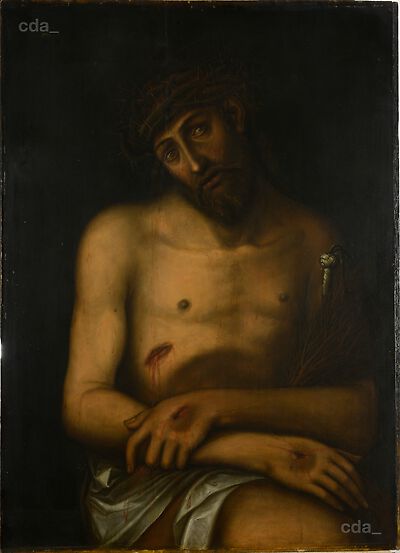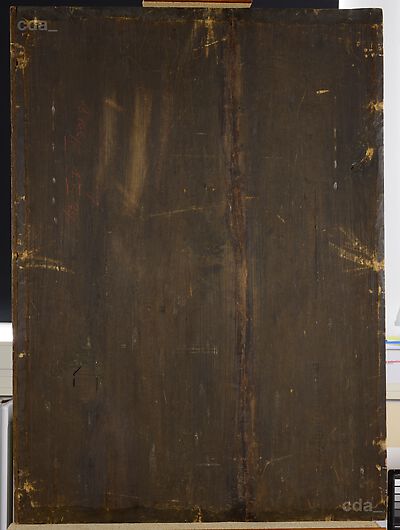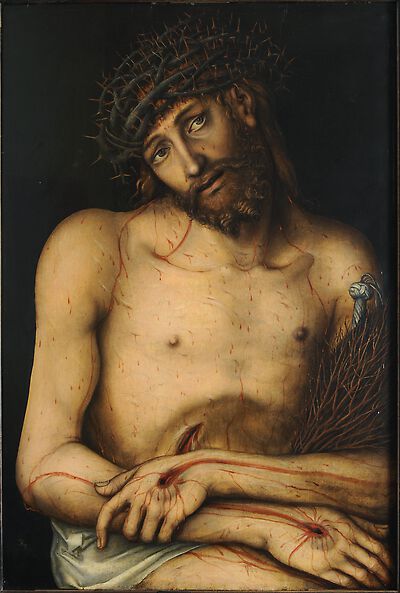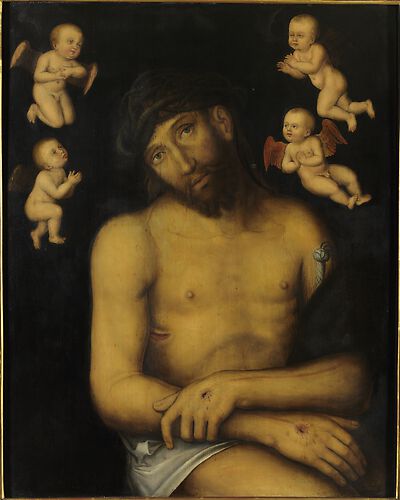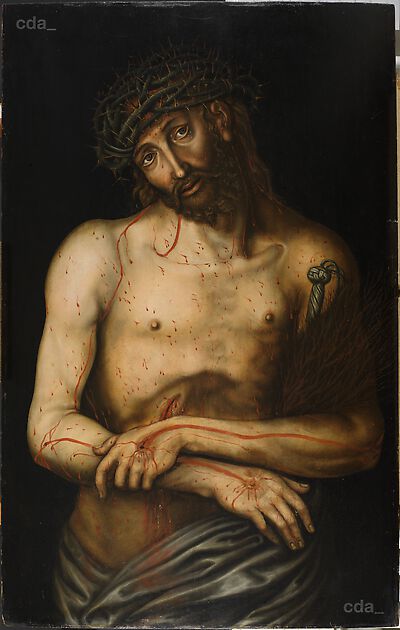Support
The wooden panel (99.5 x 72 cm) consists of three planks of different widths, vertically aligned. It appears to be hard wood. There is a knot at the top left edge. Another loss in the wooden support has been filled with a wooden insert and smoothed on the reverse with a toothed plane. A bevel of varying widths runs along the edges of the panel on the reverse.
Ground and Imprimatura
The ground is not white, instead a thin layer of grey ground was applied to the panel with a broad brush. In the x-radiography the horizontal and diagonal brushstrokes of the application are visible. This grey layer contains a considerable amount of lead white. A barb was not detected.
Underdrawing
A linear underdrawing is not visible in the infrared reflectograph, however the high proportion of dark grey tones in the flesh paint is striking.
Paint Layers and Gilding
The elements present in the paint were detected employing XRF specroscopy and by comparing the results with optical characteristics the following pigments were identified:
lead white, iron oxide, vermilion, copper pigments, cobalt pigment (probably smalt).
The grey ground layer contains particularly large white particles. The presence of lead and calcium suggests the use of lead white and calcium carbonate and/or calcium sulphate as a bullking agent. Limited amounts of zinc were also detected, but this may stem from either natural contamination or retouches. Lead-tin-yellow could not be identified. In the region of the whip both lead and antimone were detected (naples yellow?). This could also be from pigments in paint used for retouching, clearly visible under the stereomicroscope.
The pink tones for the flesh paint were applied over the initial grey underpaint. This underpaint also played a part in modulating areas of shadow. The x-radiograph shows that the paint was essentially applied with a broad brush without any obvious corrections during the painting process.
At the top left corner there is an insignia showing a serpent with dropped bird's wings, facing left. In places the light yellow paint fills the drying cracks in the dark background. The shape of the serpent does not correspond with the usual insignia found on panels from the Cranach workshop. The serpent's body is particularly broad.
The identified pigments were commonly used in European panel painting and also in the Cranach workshop. A comparative example for the use of a blocked in grey underpaint/ground with particularly large white pigment particles is not presently recorded in Cranach's known oeuvre. There are also considerable discrepancies between the present work and paintings securely attributed to Cranach with regards the quality of execution. The grey ground and the use of smalt suggest that the painting may have been created in the 17th or early 18th century.
- examined by Gunnar Heydenreich
